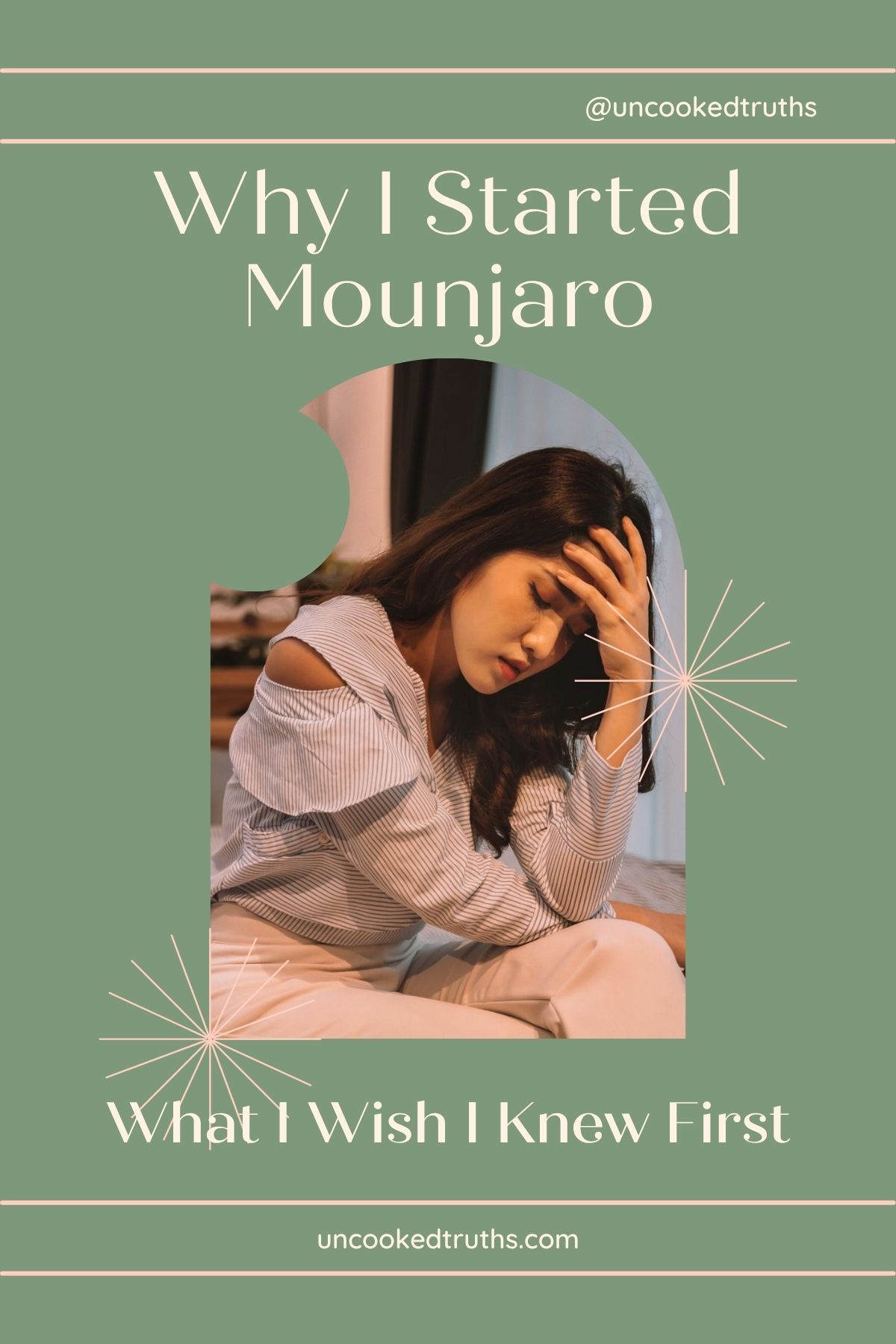If you’re a woman in your 50s wondering why your weight won’t budge, why your joints hurt, or why your blood sugar is creeping up despite all your efforts, you’re not alone. And no, you’re not doing anything wrong.

I started Mounjaro (tirzepatide) at age 58 after decades of fighting an invisible war with my metabolism. Here’s why I chose it, what I learned, and what I wish someone had told me sooner.
Jump to:
- Midlife Metabolism Doesn’t Play Fair
- My Perimenopause Was a Long, Messy Battle
- Starting HRT Helped, But It Wasn’t Enough
- What Is Mounjaro and Why Did I Choose It?
- The First Few Months: What I Experienced
- What I Wish I Knew Before Starting Mounjaro
- This Is About More Than Weight
- More On Midlife, Hormones, and GLP-1s
Midlife Metabolism Doesn’t Play Fair
I come from a long line of women who struggled with health issues after menopause. My mother entered full menopause by age 39 and was diagnosed with hypothyroidism soon after. By her mid-50s, she had high blood pressure and insulin resistance. By 60, she had type 2 diabetes. She cooked everything from scratch. She didn't eat fast food, drink soda, or snack mindlessly. But none of it saved her from metabolic decline. She died of heart failure and diabetes at 71.
That story haunted me and fueled me. I promised myself I would never ignore the warning signs.
My Perimenopause Was a Long, Messy Battle
Perimenopause hit me early, in my late 30s. The symptoms piled on: weight gain, crushing fatigue, fibromyalgia, brain fog, insomnia, joint pain, and inflammation that left me unable to recover from even gentle exercise.
Here’s what I tried before starting Mounjaro:
- Naturopathy, homeopathy, and acupuncture
- Supplements, tinctures, elimination diets
- Nutritionists, integrative doctors
- Low-carb eating, gym workouts, and walking daily
Some things helped a little, for a while, but nothing brought real change. My BMI climbed over 30. I was constantly in pain. Blood sugar numbers inched toward diabetes. And worst of all, I still felt dismissed by the medical system. Between muscle relaxants and Metformin, which was giving me horrible side effects, nothing was helping.
Starting HRT Helped, But It Wasn’t Enough
At 57, I finally found a doctor willing to start me on hormone replacement therapy. The results were dramatic. I started sleeping again. My pain decreased. The mental fog lifted just enough to function. But like many women dealing with the lesser-known symptoms of menopause, I needed more support.
My weight stayed stuck. My insulin levels were high. And I knew, deep down, that I was heading toward the same outcome as my mother. That’s when I began researching GLP-1 medications.
What Is Mounjaro and Why Did I Choose It?
Mounjaro (tirzepatide) is a medication originally approved to treat type 2 diabetes. But it’s also helping women like me address insulin resistance and midlife weight gain, even without a diabetes diagnosis. It works by activating two hormones in the body, GLP-1 and GIP, that help regulate blood sugar, improve insulin sensitivity, reduce appetite, and promote fat loss, especially around the belly.
It’s now also approved for chronic weight management, and many people are using it to address insulin resistance, prediabetes, and stubborn midlife weight gain when nothing else works.
Here’s what it can help with:
- Regulate blood sugar
- Slow digestion and reduced appetite
- Improve insulin sensitivity
- Support fat loss, especially visceral fat
I didn’t take the decision lightly. I’m not diabetic. But I was prediabetic, inflamed, and stuck in a body that felt completely disconnected from my efforts. After months of researching, questioning, and pushing for answers, I finally got the prescription.
The First Few Months: What I Experienced
Starting Mounjaro wasn’t instant magic, but it was the first real shift I’d felt in years. Here’s what changed in the first three months:
- I started losing weight steadily
- My fasting glucose and insulin levels improved
- My appetite normalized
- I felt more in control of my food choices, without obsession or guilt
But this medication isn’t effortless. I dealt with digestive side effects. I had to adjust how and when I ate. I still track my symptoms carefully and balance it with HRT, thyroid monitoring, and targeted nutrition.
What I Wish I Knew Before Starting Mounjaro
- It’s not a quick fix. GLP-1 medications work best alongside lifestyle changes and long-term commitment. For me, that included rebuilding strength and muscle without burnout or extreme workouts.
- You may need to advocate for yourself. Not all doctors are on board, especially if you’re not diabetic.
- Hormones and GLP-1s interact. I noticed changes in how my HRT was absorbed and how my body responded. Tracking is key.
- It can affect your emotional relationship with food. Less hunger can bring up old wounds around nourishment, control, and identity.
- It’s okay to need help. You are not weak for choosing a medication. You are smart for choosing tools that support your health.
This Is About More Than Weight
I didn’t start Mounjaro to fit into skinny jeans. I started because I saw what happened to the women before me, and I refused to go down without a fight. For many midlife women, weight gain is not about vanity. It’s about inflammation, insulin resistance, pain, mobility, and independence. If you’ve tried everything and nothing works, you’re not broken. You may simply need a different tool. You’re in the right place, Uncooked Truths is where I share what midlife really looks and feels like.
And you shouldn’t have to apologize for using it.
More On Midlife, Hormones, and GLP-1s
- HRT and Mounjaro: Finding Balance in Midlife
- Can You Be on Mounjaro Forever?
- How Mounjaro Changed The Way I See Food
- Menopause Support for Husbands: What You Need to Know






Leave a Reply